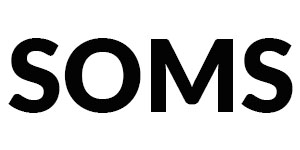Talk about relevant, real-world learning: seventh-grade science students are studying viruses.
“My students have spent the past week or so learning about general information about viruses, building a general foundation for how they work,” explains South Orangetown Middle School Science Teacher Janesa Martinez. “It’s very abstract to them because viruses are invisible hijackers. However, they are now living in a pandemic so this has gotten very real for them. (ELA Teacher) Colleen Henry surveyed students about what they’d like to write about and 95% said coronavirus. They are witnesses to history.”
In fact, students are learning about an emerging infectious disease in real-time with scientists and medical professionals. “It’s all evolving and we don’t have exact answers or a cure, so you have to follow precautionary measures,” Martinez adds. “They’re seeing that cures come from devastation.”
Over the course of the unit, students will connect prior knowledge to the global Covid-19 outbreak and develop 3D, physical models of viruses. Although this is one of Martinez’s favorite topics to teach, “it’s definitely not easy doing it remotely without the enthusiasm and energy of being in the classroom.”
Martinez also plans to address racial bias that has been amplified by the pandemic. “Our students need to see the big picture and develop an understanding of how it feels to be part of a group that is being targeted.”
As it became clear that schools would be closing in March, SOMS Science Teacher Deena Kramarczyk converted her teaching notes into an independent learning resource for students, with links to articles about Covid-19, flattening the curve and the importance of social distancing as well as analysis questions to deepen students’ understanding of these and general virus-related topics.
“I decided to jump right into the virus unit for the first two weeks of distance learning,” says Kramarczyk. “Students studied what happened in St. Louis and Philadelphia during the 1918 flu pandemic to understand the effectiveness of social distancing in reducing infections and deaths. Finally, they learned about how vaccines work to prevent illnesses and about research currently being conducted related to creating a vaccine for Covid-19. Students were encouraged to find a current event article related to the pandemic, summarize it and ask any questions they had related to their article and to coronavirus in general. The students asked interesting questions, and I enjoyed answering them to the best of my ability and directing them to additional resources for more information.”
SOMS Science Teacher Greg Sullivan’s students conducted a virus unit lab in class just before schools closed. All students began with a cup containing a liquid and a pipette; a few students were “infected” unknown to themselves and to their classmates. Students simulated a party environment in which they “shared” their beverage with two other classmates by drawing liquid from their cup into the pipette and releasing into their classmates’ cups; they also had to accept shares from other classmates and then chart all the exchanges. “The objectives were to understand how certain viruses travel through a population by simulating the transmission of a communicable disease and to analyze data to identify either the originally infected person or to calculate the percent of infection after the simulated transmission process,” Sullivan reports.
Teachers report high engagement among students, who are eager to learn and apply their knowledge to better understand the science behind the global pandemic.


You must be logged in to post a comment.